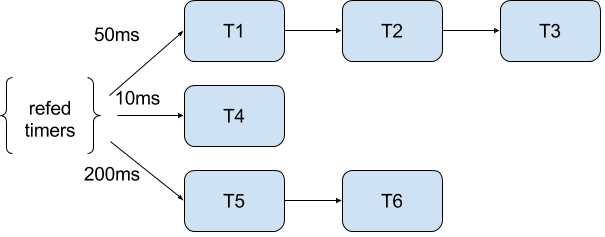How does Node.js manage timers internally
Timers are an essential part in the Javascript developer tool set. The timers API has been with us a long time, dating back to the days when Javascript was limited to the browser. This API provides us with the setTimeout, clearTimeout, setInterval and clearInterval methods which allows us to schedule code for later execution, either once or repeatedly.
Thanks to Node.js timer module, these methods (along with a few others, such as setImmediate and clearImmediate) are also available natively in node code. On top of user code and 3rd-party libraries using timers, timers are also used internally by the Node.js platform itself. For example, a dedicated timer is used with each TCP connection to detect a possible connection timeout. It’s very possible that Node.js will have to manage a large number of timers, so it’s important that the implementation will be highly efficient. In this post I will look at the way Node.js manages these timers under the hood.
SUMMARY : 在node.js内部实现中,也是需要timer功能的;所以node.js内部是需要维护大量的timer的;以此类推,在OS中,也是如此;
Before tackling the timers implementation, it’s worthwhile to examine Node.js implementation of linked lists; they play a large role in the timers implementation, and have some interesting parts to them as well.
Linked Lists
The relevant code is quite short, and contain all the methods you’d expect to find in a linked list implementation, such as create, append, remove, peek, shift, isEmpty.
Timers
Each Timer instance is initialized with msec argument which determines the delay (in millisecond) until timeout. It’s quite intuitive that if we initialized two timers with the same msec argument, then the second timer will timeout either with or after the first. Node.js uses this and organizes the Timers by indexing them according to their msec: all Timers with the same msec value will form a linked list, ordered by creation time (there are actually two indexes, one for refed timers and one for unrefed timers, but we’ll ignore this fact for now. See here to read about the difference).

In this example, we initialized 6 timers. T1,T2,T3 were initialized with 50 msec, T4 with 10 msec and T5,T6 with 200 msec.
Each Timers list is backed up by a TimerWrap, which is a wrapper over a uv_timer_t, a native libuv timer type. Since we know the timers in each list are ordered by non-decreasing timeout, a single TimerWrap is enough, as we can reuse it between timeouts.